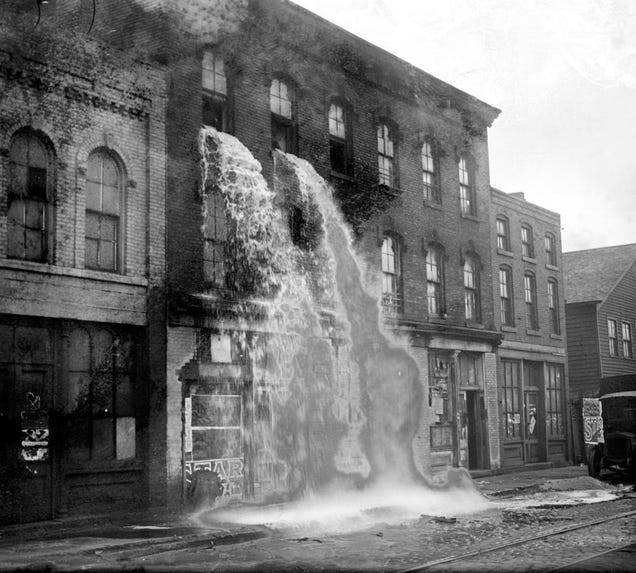 |
| Image courtesy Library of Congress |
Happy anniversary! On this date in 1919, America officially became a "dry" country as prohibition became the law of the land.
Following the ratification of the 18th amendment, there was a whole lotta alcohol that needed to be disposed of around the country, and photo archives show that authorities forced many breweries to drain their inventories. Literally.
 |
| Image credit |
| Image credit |
 |
| Image credit |
Seeing these, we asked our Environmental Services staff: What impact—environmental or otherwise—would this much alcohol have if it entered our sewers all at the same time?
"With a system as large as ours," said Superintendent of Environmental Services Scott Broski, "it would have to be a very large spill" to have an impact on our treatment processes. "The potential [environmental] hazard in the collection system would probably be the bigger concern."
He says this because of the effect alcohol has on aquatic life. In small doses, scientists say it can lead fish to exhibit "anti-social behavior."
 |
| Analyst Lindsey Vanesky conducting whole effluent toxicity tests. |
That's a more immediate concern in separate-sewer communities where storm sewers discharge untreated directly into the environment. In combined-sewer areas like Cleveland and inner-ring suburbs, the stormwater and sanitary sewage flow in the same pipe, which means the combined flow would be treated at a wastewater treatment plant.
"Dilution would be a factor," in that case, Broski said. "The microorganisms [in the biological treatment process] would likely consume the waste as food," which is one stage of the treatment process.
While we don't have records of if or how the 1920 alcoholic deluge actually affected the environment at the time, we can say many practices in place in the early 1900s put Cleveland's water resources in a precarious position, culminating with the Cuyahoga River fire in 1969.
Since then, the work of individuals and organizations like ours have led to a rebirth of our river and lake, a rebirth that continues to this day.
Cheers to that.

No comments:
Post a Comment
Thank you for your comments. We try to review and post comments the next business day. Posts containing obscenity, indecency, profanity, threats, or defamation will not be posted. See our Comment Policy for details.